
Zocho-ten (South)
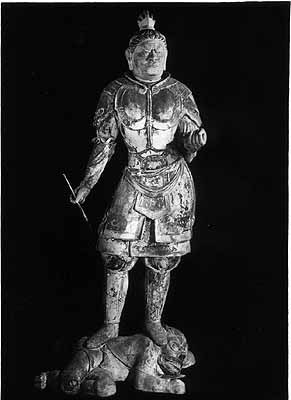
Komoku-ten (West)

Bishamon-ten (North)
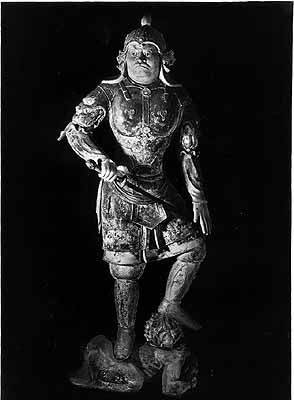
Jikoku-ten (East)

Zocho-ten (South) |

Komoku-ten (West) |

Bishamon-ten (North) |

Jikoku-ten (East) |
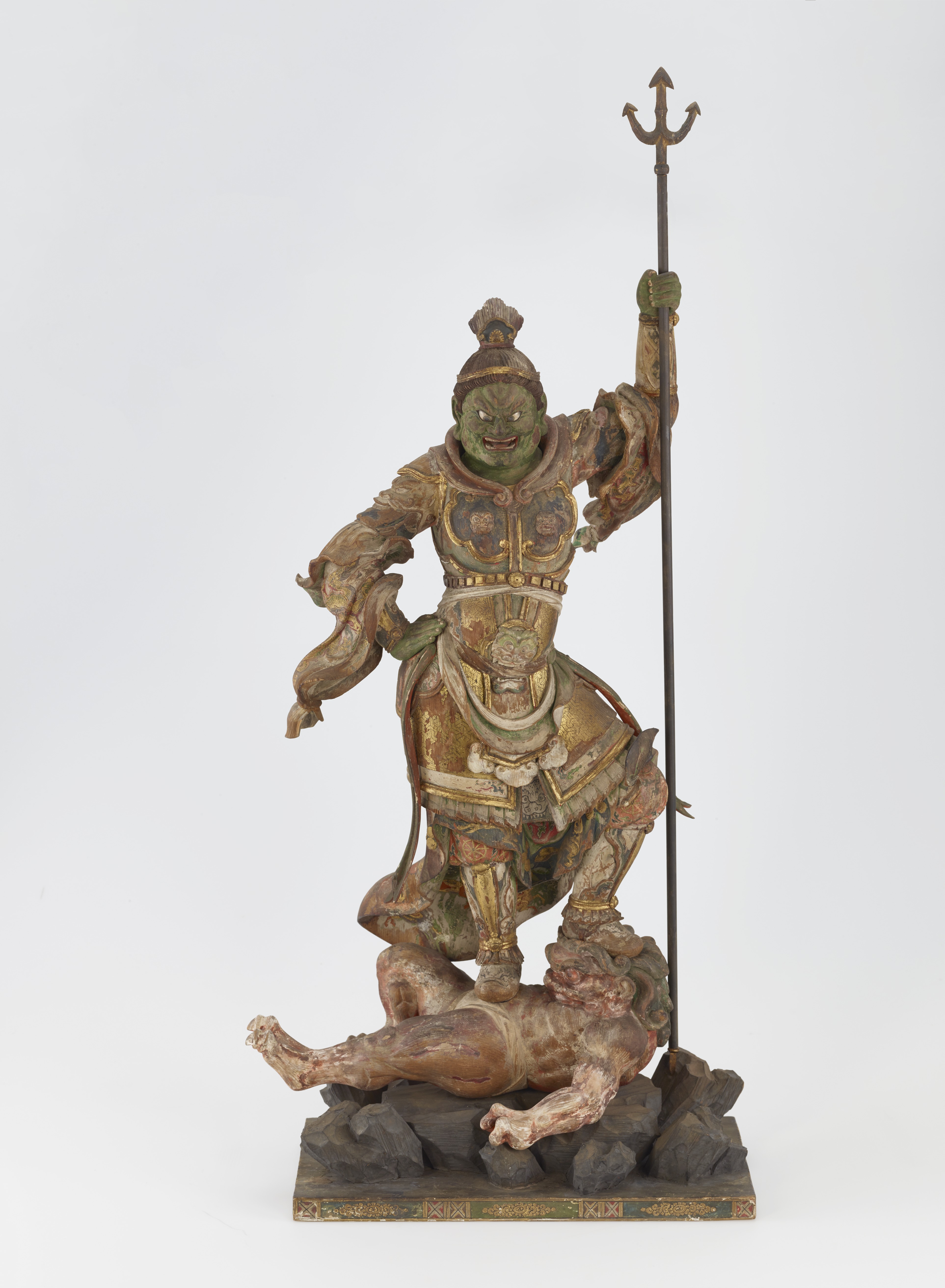
Zocho-ten (South) |
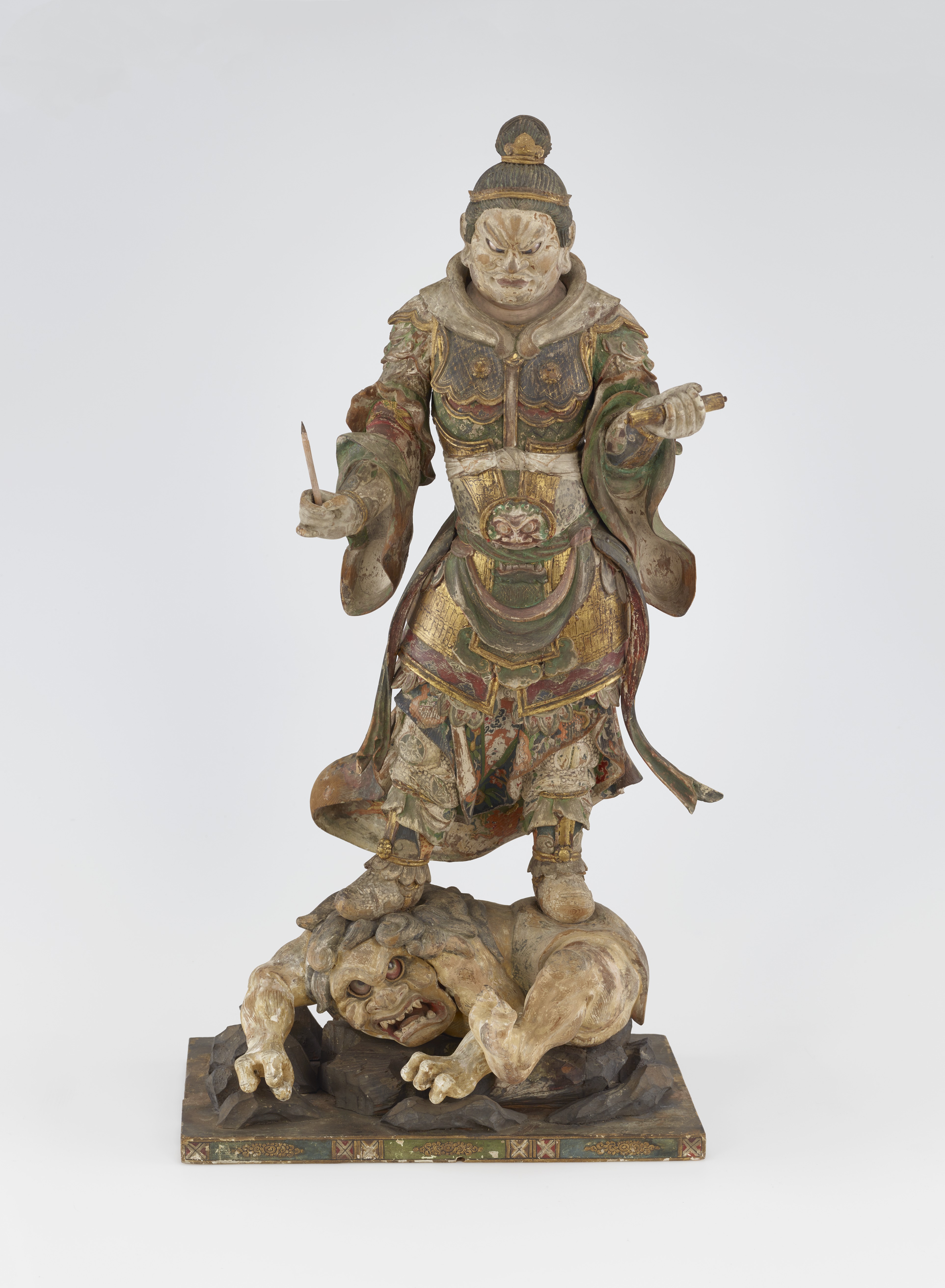
Komoku-ten (West) |
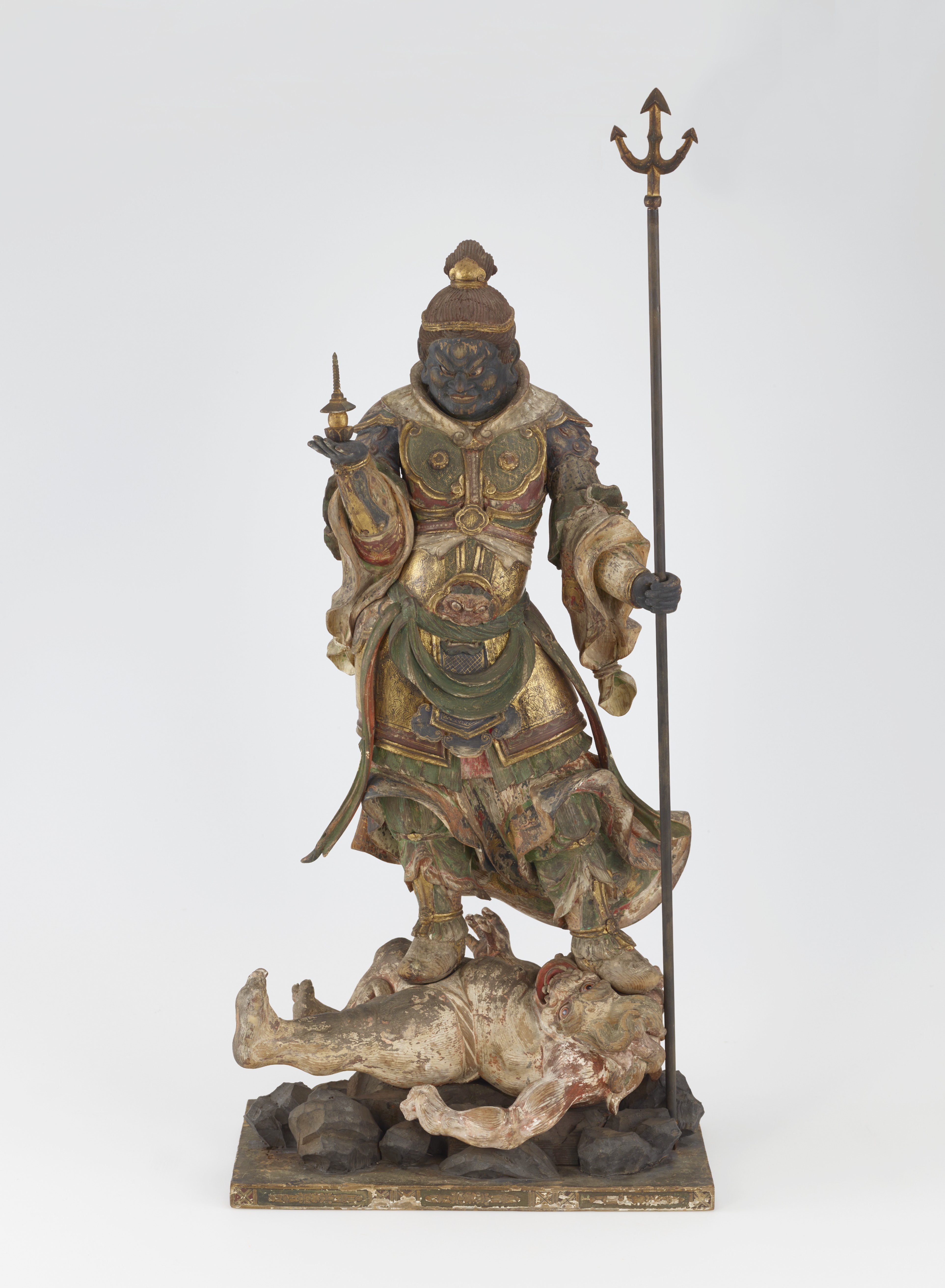
Bishamon-ten (North) |
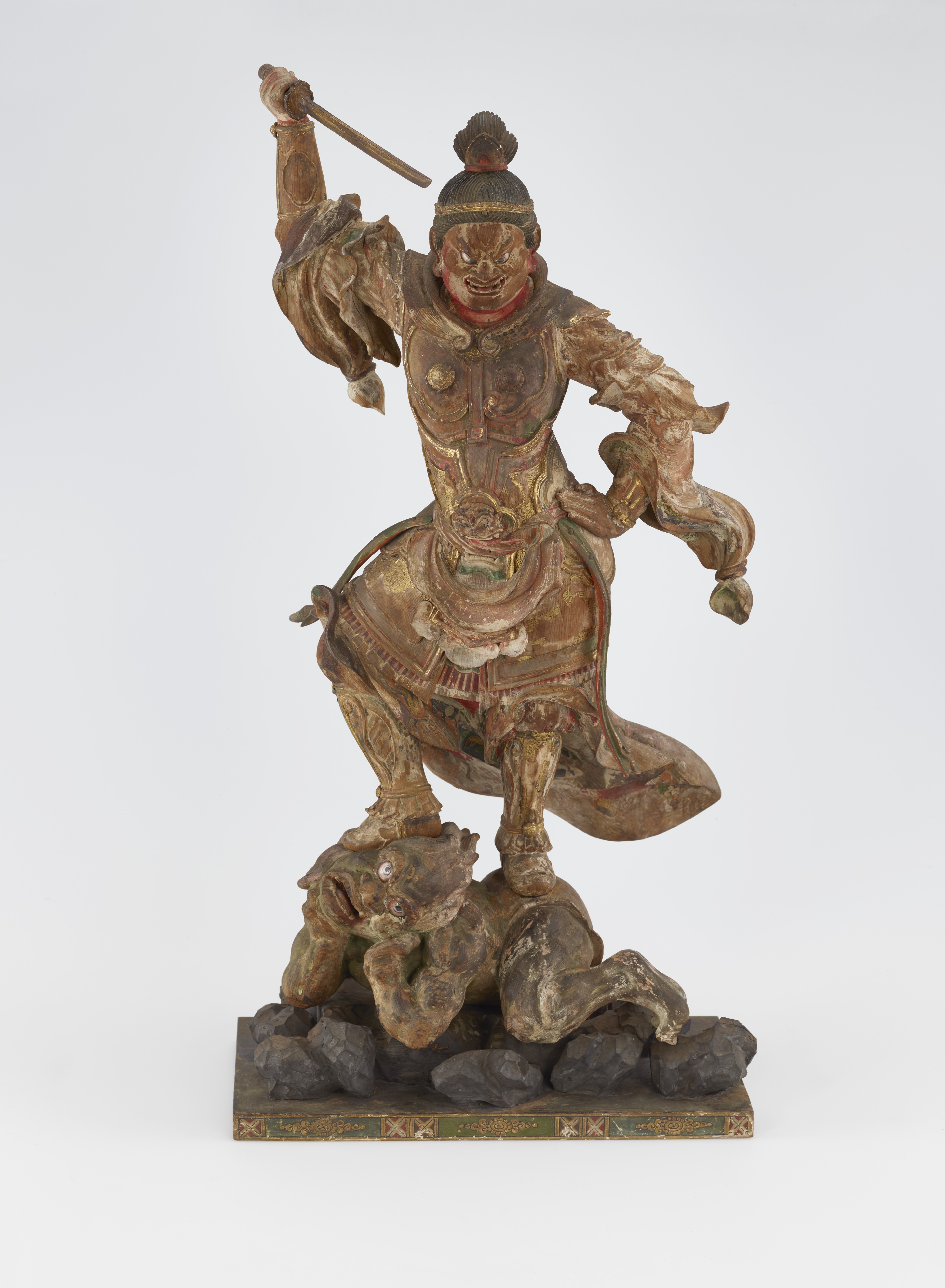
Jikoku-ten (East) |
The Shi-tenno (literally, "Guardian Kings," but most often translated as "Directional Guardians") are deities, protectors of Buddhism, who guard each of the four directions of the compass (north, south, east, and west) from harmful and dangerous influences. Originally from India, the Directional Guardians were transmitted to China during the Tang dynasty (about 600 AD), and from thence to Tibet, Korea, and Japan. The Guardians appear in paintings, such as mandalas, and especially in temple sculptures, where they usually surround and protect a central Buddha image.
Shown here are two sets of sculptures, from the Nara and Kamakura periods in Japan. The Nara-period set, from Todai-ji, date from the temple's founding in 752. The statues are life-size, and made of painted clay. Their state of preservation is outstanding. They are housed in the Kaidan-in (Ordination Hall). Worth noting, in the Todai-ji masterpieces, is the subtle variation in the expressions, attributes, and actions of the figures, made possible by the expressiveness of the clay medium. At some time after these photos were taken, a pagoda was restored to the right hand of Bishamon-Ten, a left arm was restored to the body of Komoku-Ten, and a lance was restored to the right hand of Zocho-Ten.
The Freer sculptures are smaller, between 1.5 and 2 ft. tall. They are made of painted wood; much of the original paint is still present, and shows outstanding detail, especially on the lower inside of the figures' overcoats, where many typical Buddhist symbols (such as the First Sermon - Wheel of Law flanked by Lions) are depicted.
Stylistically, both sets of figures are obviously "Chinese;" their similarities are much greater than their differences, in spite of the more than 400 years between them. The Heavenly Kings are armored and cloaked; they carry weapons – trident and sword – and other attributes (see below). An animal head – probably a lion motif from Central Asia – is centered on their breastplates, and similar fierce animal heads guard their shoulders. Beneath their feet, the Guardians trample demonic figures that are usually descibed as "enemies of Buddhism;" these demons represent psychological states, such as ignorance, greed, and anger, which prevent people from receiving the Buddha's message. The "trampling" iconography is very old, and comes originally from pre-Buddhist cults in India, especially that of Lord Shiva. Three of the four trampled demons have cloven hoofs; the other one, trampled by Bishamon-ten, has four-toed feet and hands, which shows that he is a demon rather than a (five-fingered) human being.
The iconography of Jikoku-ten (East) and Zocho-ten (South) is generic. Their swords symbolize the intellectual power of Buddhist doctrine, and the triple prongs of their tridents refer to the "Three Jewels" of Buddhism: the Buddha himself, the Dharma (teaching), and the Sangha (community of monks). This trident symbolism, like the trampling symbolism, was originally Shaiva.
Komoku-ten, Guardian of the West, typically holds an ink-brush and sutra-scroll, symbolizing the power of the sutras (Buddhist scriptures) to save all sentient beings; this symbolism refers to Amida Buddha, the Buddha of the West, into whose paradise the believers in Amida will be reborn; Amida's scripture is the Lotus Sutra.
Bishamon-ten, the Guardian of the North, carries a stupa which symbolically contains some relics (ashes, bones) of the cremated Buddha. In Chinese cosmology, still familiar today as "feng shui," North is the most dangerous direction (note 1), such that dwellings (including the palaces of the Tang and Heian emperors) are built facing in the opposite direction (south). It follows that the Guardian of the North must be the leader of the other directional guardians, and that he must carry the most powerful amulets – namely, the relics of Buddha's own body – in order to defend against the malign Northern influences.
Directional colors are highly variable, and an unreliable guide to iconography. Typical color assignments are:
| Color | China | Tibet | Japan |
| blue/green | east | south | east (green), south (green or blue) |
| blue/black | north | north | north (blue) |
| red | south | west | ? |
| white/yellow | west | east | ? |
The names and principal iconography of the Directional Guardians are:
| Japan | Zocho-ten | Komoku-ten | Bishamon-ten, or Tamon-ten | Jikoku-ten |
| China | Zengzhang | Guangmu | Duowen | Chiguo |
| India | Virudhaka | Virupaksa | Vaishravana | Dhritarastra |
| Direction | South | West | North | East |
| Iconography | trident or sword, other hand on hip | ink brush, sutra | stupa | biwa (lute) |
Source: Louis Frederic, Buddhism (Flammarion Iconographic Guides, 1995)

|

|

|